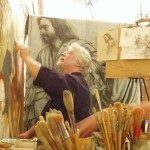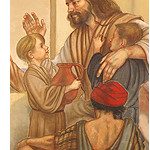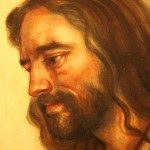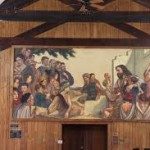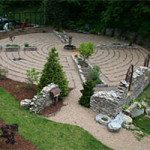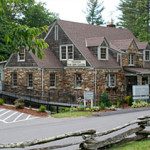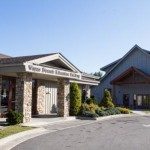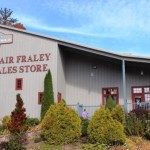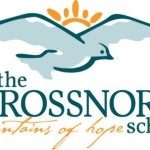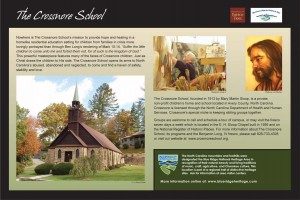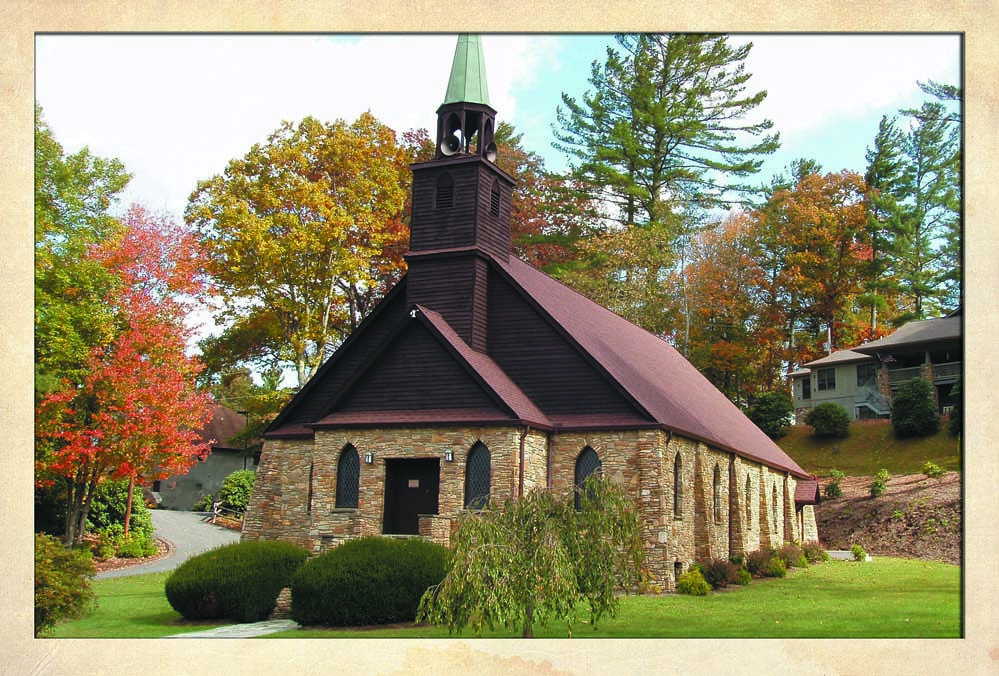
100 DAR Dr
Crossnore, NC 28616
Fresco master Benjamin F. Long’s rendering of the Biblical passage Mark 10:14, “Suffer the little children to come unto me and forbid them not, for of such is the kingdom of God” portrays the essence of The Crossnore School’s mission to provide a Christian sanctuary of hope and healing where students in need rise above their circumstances and excel both in school and in life. This powerful masterpiece features many of the faces of former Crossnore children.
This is one of the frescoes on the Benjamin F. Long IV North Carolina Fresco Trail.
Crossnore Communities for Children, founded in 1913 by Dr. Mary Martin Sloop, is a recognized leader in helping children who have experienced trauma reclaim, rebuild, and reimagine the essential belief in a safe, dependable home. Crossnore is a 501(c)3 nonprofit organization providing a full continuum of services to children and families in North Carolina.
Crossnore’s mission is captured in the powerful masterpiece Suffer the Little Children, Ben Long’s rendering of Mark 10:14, “Suffer the little children to come unto me…” The fresco is located in the E.H. Sloop Chapel and is open for viewing daily from 8:30 am to 5:00 pm. Groups are invited to schedule a group tour by calling (828) 733-4305.
Across the street from the chapel is the historic Crossnore Weavers. This working museum features a weaving studio and retail shop. Crossnore Fine Arts Gallery, representing local and regional painters, sculptors, and fine craft persons, is located in the same building. Proceeds from both businesses support the mission of Crossnore.
About the Artist
Born in Texas in 1945, artist Benjamin F. Long IV grew up in Statesville, and studied at the University of North Carolina at Chapel Hill and the Art Student’s League in New York. He later lived in Florence, Italy, where he began his apprenticeship under Maestro Pietro Annigeni. He has since achieved international fame as a master of both true Fresco, drawing and oil painting. His excellence in the field of fresco painting has resulted in worldwide commissions, including France and Italy and several sites in North Carolina.
What is a Fresco?
Fresco is the medium Michelangelo chose when he painted the ceiling of the Sistine Chapel. The technique involves mixing sand and lime, placing the mix on a wall and painting it while it’s still wet. Fresco painting is a tenuous art. So quickly does the bonding of the pigment to wet plaster take place that great skill and meticulous planning must be maintained in order to achieve the beautiful result.
The Fresco Process
With a fresco, there are many steps before the first stroke of paint is placed on the wall. The scratch coat is made up of partially slaked lime combined with sand. The preliminary drawings were sketched and then refined. Individual studies of certain elements of the painting – such as portraits – were produced to help in the artist’s development of the original composition.
Cartoons were created and enlarged to the full scale of the finished fresco to ensure the accuracy when transferring the drawing to the wall. The wall was made into a grid where the drawings were traced on the wall through a process called pouncing. A large needle is used to punch along the traced lines every few inches. These punched tracings are affixed to the wall and a dry medium is used to create a dotted outline on the scratch coat.
The final painting surface must be neither too wet nor too dry. Extreme care is given to mixing the pigments with distilled water. Mulling is labor intensive, but necessary to ensure that pigments and lime crystals are ground finely enough to be drawn into the porous plaster as it dries. The fresco is now completed with the emulsifying of lime and sand, complimented with the elegant colors for people to view.
![]() The Blue Ridge Heritage Trail is a program of the Blue Ridge National Heritage Area Partnership.
The Blue Ridge Heritage Trail is a program of the Blue Ridge National Heritage Area Partnership.
